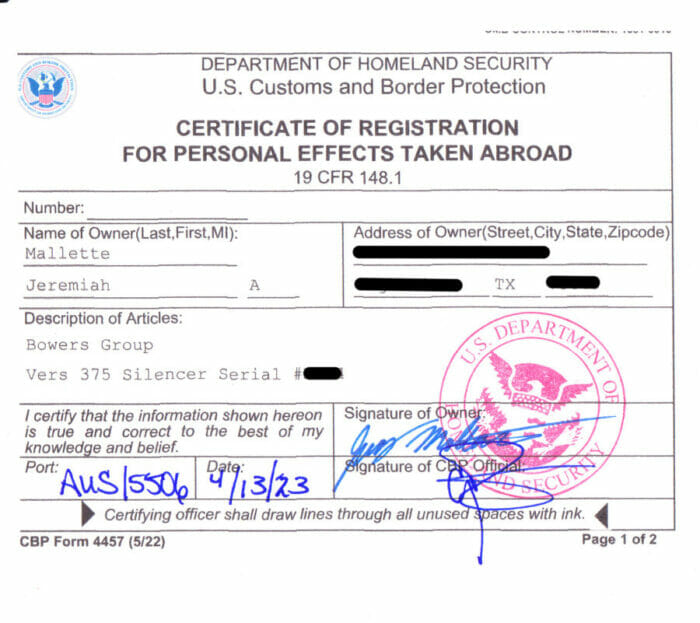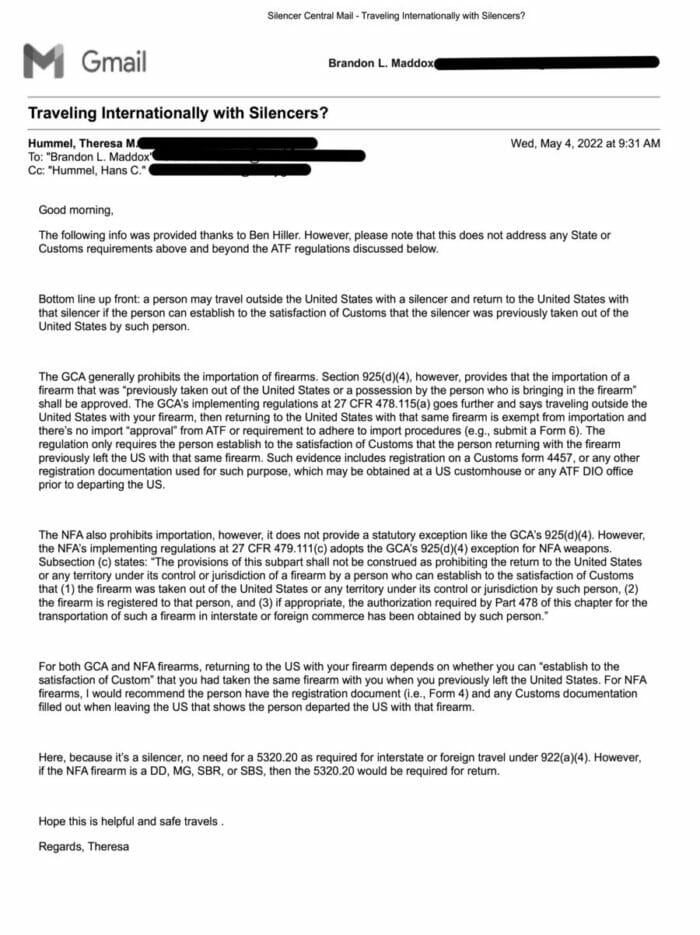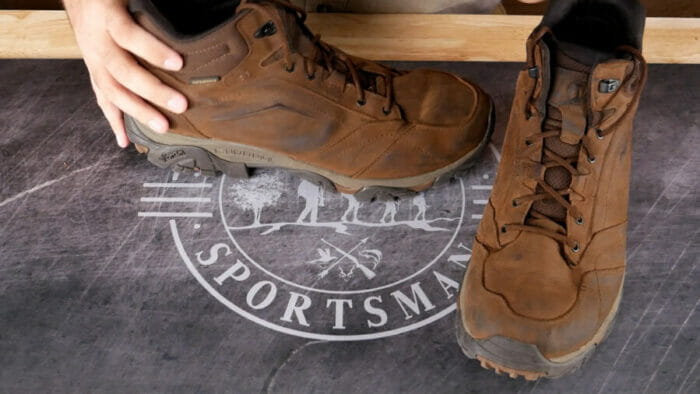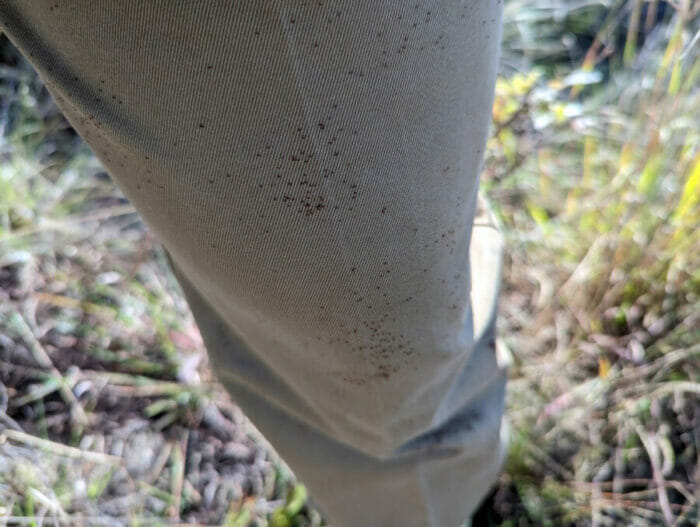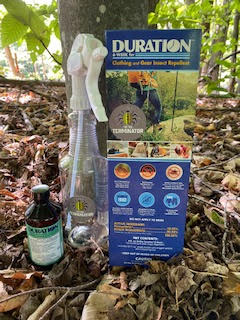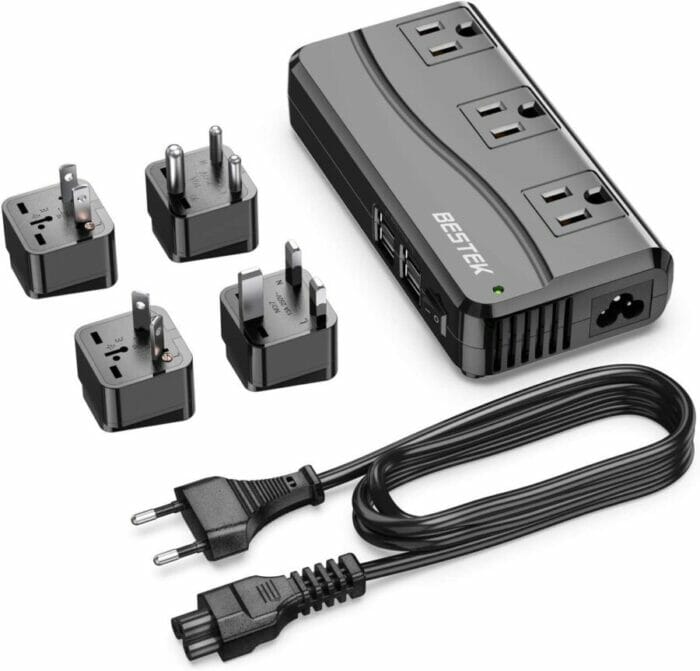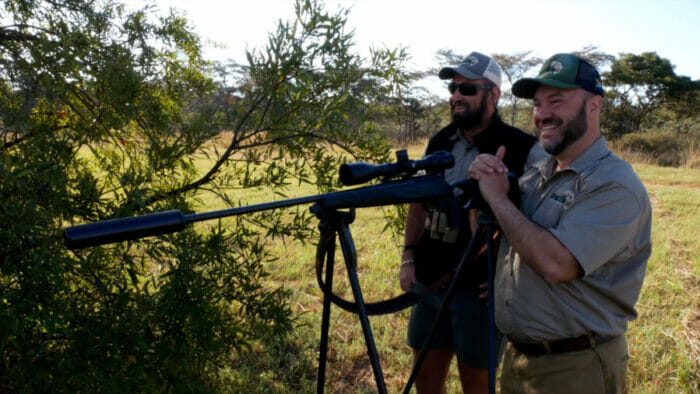What to Bring on an African Hunting Safari
If this is your first trip to Africa on safari, knowing what to bring can seem a little daunting. I just did an eight-day plains game safari with RDB Safaris, which was a huge success and a memorable hunt. Here is a list of what to bring on your African safari and extras you might want to have with you. It’s not complicated, but if you don’t plan ahead, then you may find yourself on a different continent wishing you had prepared better.
I’m going to cover:
- The paperwork for traveling to South Africa.
- The clothing needed for a safari.
- What you should bring along with your rifle or bow.
- Accessories that you might want on your African safari.
Paperwork
The required paperwork might seem overwhelming at first, but it doesn’t have to be. If you are taking your own firearms on a safari in South Africa, you will need to fill out a South African Police Service (SAPS) Form 520. This is an application for temporary import of firearms into the country.
Your Form 520 needs to be filed with the SAPS at least five weeks before you arrive in South Africa. Your PH should be able to help if you need assistance completing the form. Rumano from RDB Safaris made sure it was correct and sent it to SAPS for me. Because there is some paperwork involved with PHASA, (Professional Hunters Association of South Africa) there is a $250 charge for the paperwork.
While your documents are in the works, you need to visit the local US Customs office with your firearms to obtain a signature on a Form 4457 Certificate of Registration for Personal Effects Taken Abroad. DO NOT BRING YOUR AMMUNITION WITH YOU TO CUSTOMS. Print off the 4457 and have it filled out before you enter customs. The customs officer will check the serial number of your rifle and sign it. The 4457 acts as a gun license when entering African countries.
If you are taking a silencer with you, then fill out a 4457 for the silencer, too. Silencer Central contacted the ATF, and you can read their response about traveling abroad with a silencer below. I had zero issues taking my Bowers Group Vers 375 with me on safari.
I made a copy of the 4457’s, my passport, and my tax stamp for the silencer and had a copy in my gun case and carry-on luggage.
Depending on the airport where you have a layover, there might be additional paperwork for you to fill out. For example, I flew from Austin to Amsterdam before continuing to Johannesburg. Amsterdam requires a safety fee of €50 and paperwork on file well in advance of your trip. You can see an example of the paperwork here.
Safari Clothing
The great thing about safari in South Africa is that the staff at the lodge does your laundry everyday, so you don’t need to pack heavy. Most people can probably fit everything into a 40-liter carry-on case or backpack. If you are traveling with a rifle case, then it is nice to have no additional baggage charge and just use a carry-on. However, you might want a larger suitcase if you plan to bring back souvenirs.
You only need three pairs of pants and three shirts, plus your layers and undergarments. I fit all of those in a 40-liter pack without issue.
Here are some tips for what your kind of clothing to bring:
- Safari clothing should be light brown, khaki, olive or light green.
- Avoid bright colors such as blue, pink, orange etc. You want to blend in, not stand out.
- Avoid dark colors such as black or dark They attract insects you want to avoid, like the tsetse fly.
- Camo is illegal in some countries in Africa. However, it is legal in South Africa and Namibia. In South Africa, your PH is not likely to be wearing camo. While it isn’t necessary, if you feel more comfortable in camo, then bring it.
- Your clothes are washed in hot water and ironed daily to kill any ticks or tsetse fly larva. For that reason, 100% cotton is a good choice for your pants and shirts, since they won’t melt under an iron like synthetics do.
- Wear clothing that is comfortable, since you will be out hunting and walking for most of the day.
- Some of the lodges might have pools, so don’t forget your bathing suit.
- Sunglasses are a great item to have to spot animals easier in the brush during the brightest parts of the day.
I opted for some simple short-sleeve and long-sleeve cotton shirts from Cabela’s/Bass Pro. They were inexpensive at $20 a shirt and performed well. As a bonus, I didn’t have to worry about ripping or tearing them up since they were so inexpensive. I wore long sleeves most of the time to protect myself from the sun. I didn’t overheat, and it was nice to have the extra protection from the thorns and brush.
I found it difficult to find 100% cotton pants. Most places sell cotton with some sort of blend to them. I personally wanted pants that were midweight and could hold up to the thorns that you encounter in the bush. I went with the Orvis Ultimate Khakis, and while they cost a bit more than I wanted to spend, it was well worth it. They look great and didn’t rip or tear in the multiple days of stalking. I still use them, so it was worth the investment.
For socks, I recommend some midweight wool socks like the Smartwool hiking crew socks. They have lots of cushion and are tall enough to be above your gaiters, which are around your ankles. Wool is breathable, regulates your body temperature, and wicks away moisture. Wool socks will keep your feet dry and happy.
For underwear, it all comes down to preference. Remember, you are going to be walking and hiking in the heat through the brush. I recommend the ExOfficio brand for keeping you cool and dry.
The mornings are going to be cool, sometimes downright chilly, so bring a few layers with you. A light jacket or hoodie, maybe a fleece vest are good options. You can take them off as things warm up and then put them back on in the evening as the temperatures drop again. During the winter months (June-August) you’ll want a thicker jacket, beanie, and gloves.
Footwear
One of the number-one questions people ask is, “What type of boots should I take on an African safari?” Don’t take heavy hiking boots. Heavy boots with big lugs make a lot of noise when moving through the brush and dry leaves. Boots with ankle support are good, but they should be comfortable and flexible. Your PH is likely to wear vellies, which are South African walking shoes made from tanned leather uppers attached to a leather footbed and rubber sole. They are very quiet when walking in the bush and typically have a smooth sole. Courteney boots are a good option and will give you an idea of what type of boot you should be looking for. I recommend Merrell mid boots, like the Moab. It has a soft sole that provides traction while not being heavy or too loud. They have mesh versions, but with the ticks, thorns, and grass seeds, the full leather version is a better choice.
No matter what boot you choose for a safari, make sure that you break it in months before your trip. Don’t purchase your boots and wear them for the first time in the bush.
Clothing Accessories
A hat is a must on an African safari to keep you cool and prevent sunburn. Your hat should be an appropriate color, as mentioned before: light brown, khaki, olive, or light green. Wide brim hats are nice, like Tilly’s, or outback hats like the Outback Trading Co. Mariner hat. These provide protection from the sun and keep your head cool. The REI Sahara Sun Hat with cape is also a good option for keeping the sun off your neck. Your PH will most likely wear a baseball style hat, and those work fine. Just use sunscreen on your face, neck, and ears. You might also opt for a bandana or cotton scarf to keep the sun off your neck.
Gaiters are 100% necessary for hunting in the bush. They keep the ticks, grass seeds, and thorns at bay. Without them, you will be in a world of hurt. There are several types on the market. I used gaiters from TAG, but while I was in-country, I picked up leather ones with zippers from Mark of Legend. I will use leather gaiters for my future trips.
Treat your clothing!
Bugs and ticks are a real problem in Africa. In the Limpopo area of South Africa, there are tons of ticks, and you need to protect yourself from them. I reached out to my friend Brian Anderson, the Tick Terminator, who sells a tick repellant called Duration, which you use to treat your clothes. It is odorless and works wonders. I had ticks on my clothes, but they would fall off quickly. I didn’t get bitten by a single tick my entire time there.
Miscellaneous Items
Pack your prescription medication in your carry-on as well as your camera equipment and a change of clothing. Below are some other items you might want on your trip:
- Sunscreen is a must.
- Headlamps for when the power goes out. In South Africa, this is a common occurrence and blackouts can last for several hours.
- Travel adapter and voltage converter. I used the BESTEK Universal Travel Adapter 100-220V to 110V Voltage Converter 250W with 6A 4-Port USB Charging 3 AC Sockets and it was perfect. Pick up a country-specific adapter when you land at the airport.
- Bring some general meds, like ibuprofen, anti-diarrhea pills, allergy meds etc.
- Nasal spray is a great item to have to keep your nose from dying out in the low humidity.
- Lip balm is also recommended for the same reason above.
Hunting Equipment
Another question is, “What caliber of rifle should I bring on my safari?” Rumano from RDB Safaris says that a 308 WIN is more than enough for all plains game animals, and a 375 H&H is recommended for dangerous game. He said that any member of the 30-caliber family, 30-06, 308, 300 WM, etc. will get the job done on plains game. His personal favorite is the 308 using 180gr bullets. While you can use a larger caliber, shot placement is everything, so make sure that you can follow up quickly with your preferred caliber.
You will be using shooting sticks, so make sure you practice with them. There are several different types of shooting sticks on the market, but I prefer the Viper Flex. They provide support at the front and back of the rifle for an extremely stable shot. Your PH will have shooting sticks if you don’t bring your own, but remember to practice shooting from sticks. You can be the best shot in the world on a bench, but it won’t help you on sticks in Africa.
Your rifle case should have multiple locks on it and they should be non-TSA padlocks. I used a Nanuk 990 rifle case with master locks to keep everything secure. TSA rules state that your rifle must be in a lockable hard case, and you must use non-TSA locks. The key will remain with you.
Your ammunition must be in a checked bag that is separate from the rifle and in its own lockable case with non-TSA locks. I used a small pelican case to hold the ammunition and put that in my larger suitcase. You can only bring ammunition for the caliber of rifle that you are using. Also, there are restrictions on how much ammunition you can bring. In South Africa you are limited to two firearms and 200 rounds per firearm.
Some people opt to not use a rifle sling, but I found it useful when doing long stalks or walks through the brush.
Silencers are legal in South Africa and many other countries. You fill out a form 4457 for your silencer just as you would for your rifle. Keep a copy of the tax stamp and your 4457 in the case with your rifle.
Binoculars are a must for spotting animals as well as sightseeing. I found them to be indispensable. I used a bino harness from T&K Hunting Gear that also had a pouch for my rangefinder and other bits.
A knife isn’t necessary, but is nice to have. You don’t need a hunting knife, since the PH and his team will handle everything. A small multitool or Swiss army knife works fine.
Keep it Simple
Don’t overthink your trip to Africa. As you can see, there isn’t much to bring. Just have a positive outlook and enjoy your time. Africa will change your life, and you will start to plan your next trip as soon as you are back home.
Jeremy Mallette is co-founder of International Sportsman. An avid hunter and outdoorsman, he has spent more than a decade in the outdoor industry, from hiking and camping to silencers and hunting. His father taught him to shoot at age six, and he received his first firearm at age eight — a 1942 Colt Commando .38 special revolver. He enjoys yearly trips to Kansas for pheasant hunting, spending time with his children at the deer lease, and collecting unique firearms.

